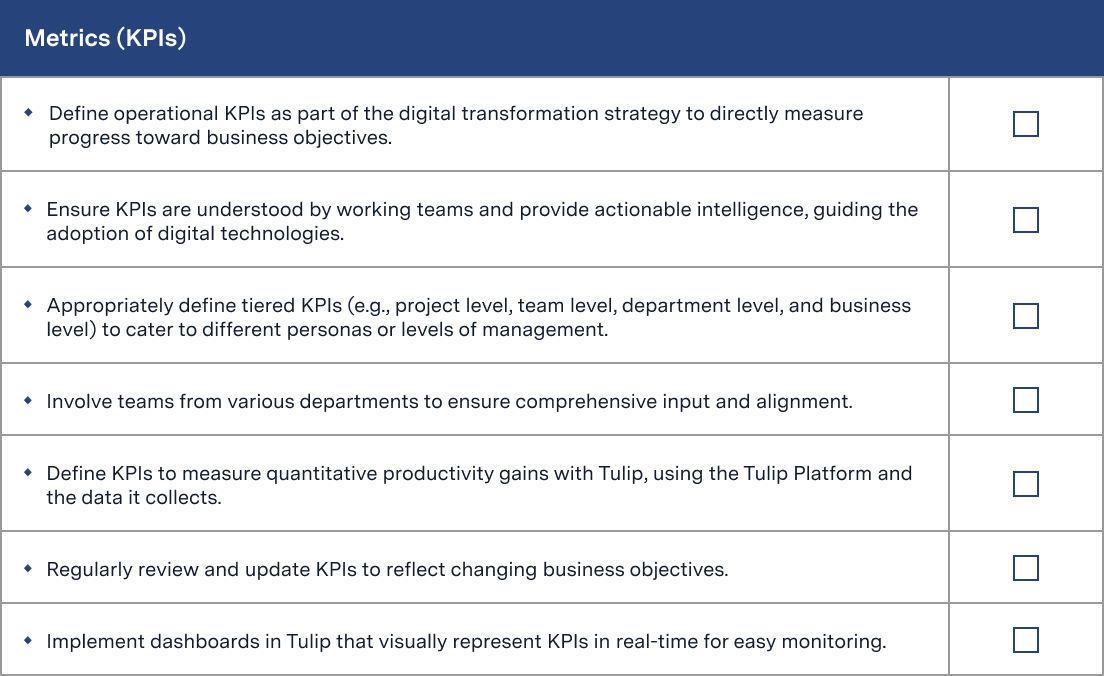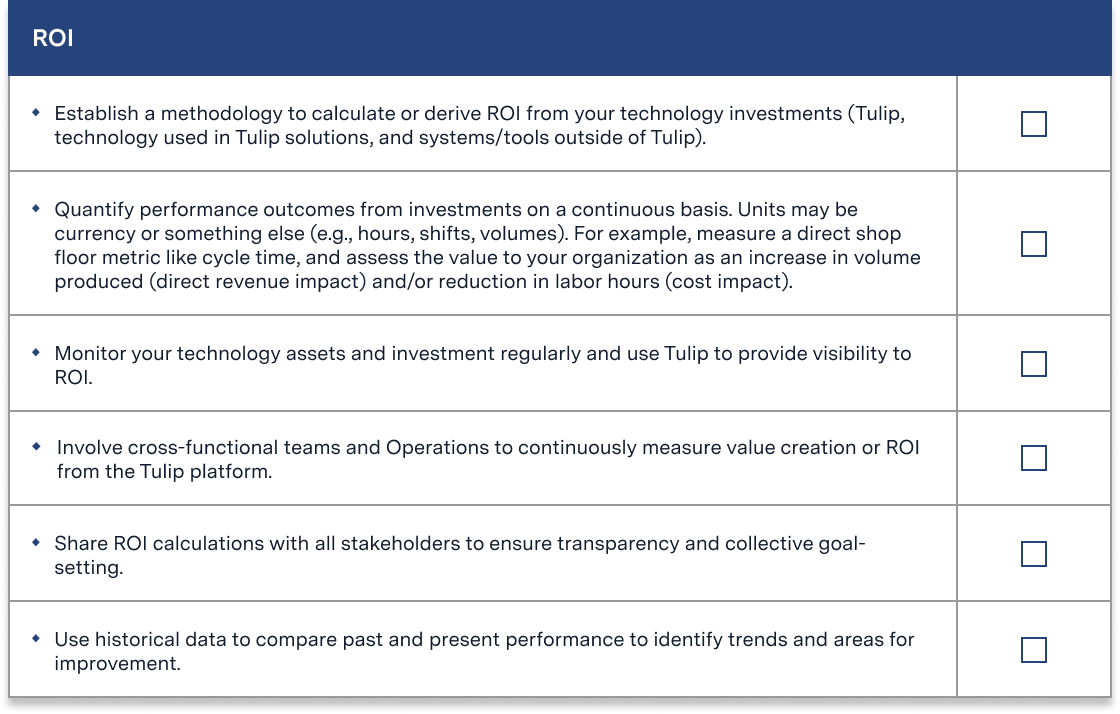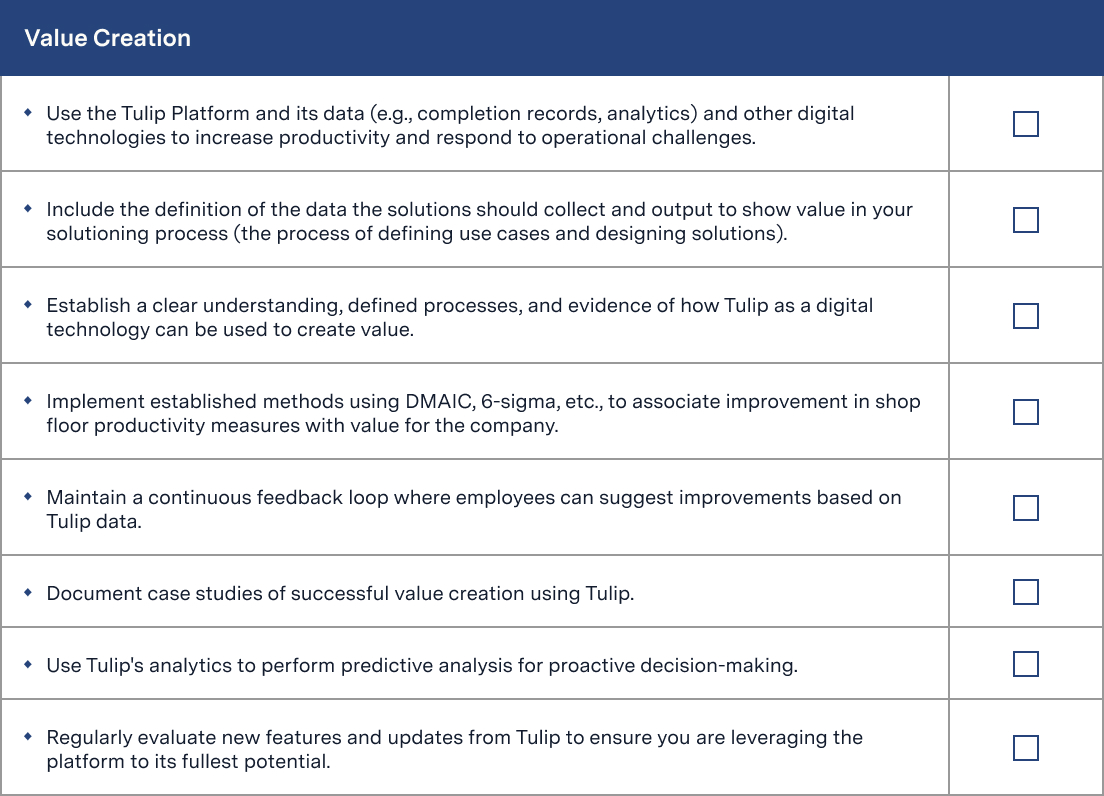This article is one dimension of our Digital Transformation assessment.
Overview
In this section, we’re looking at whether or not an organization has a financial framework that proves a digital solution is adding value and defines measurements it cares about.
Your company/site should have a methodology to calculate or derive ROI from your technology investments. You should be able to quantify performance outcomes from your investments on a continuous basis by regularly monitoring technology assets and investments, using mainly Tulip (but possibly some external systems or tools) to provide visibility to ROI.
These processes and tools should involve cross-functional teams and operations to continuously measure value creation, or ROI, from Tulip. Practical units may be currency or something else, like hours, shifts, or volumes. For example, a direct shop floor metric might be cycle time, and the value to your company could be measured as an increase in volume produced (direct revenue impact) and/or reduction in labor hours (cost impact).
Metrics (KPIs)
Operational KPIs are necessary for measuring progress towards business objectives and guiding the adoption of digital technologies. These KPIs should be understood by all team members and defined at various levels, such as project, team, department, and business. Regularly review and update these KPIs to ensure they reflect current business goals, and use Tulip’s dashboards to monitor them in real-time for actionable insights and productivity gains.
Take a look at our Business Objectives template to pinpoint operational pain points, prioritize goals, and set measurable KPIs.
Checklist

Download Digital Transformation checklists here.
ROI
Our ROI checklist checks whether your organization or site has a methodology to calculate or derive ROI from technology investments. Are you using digital tools–specifically Tulip–to provide visibility to ROI, and are using that data to make strategic decisions around expansions and roadmaps?
Tools and processes for calculating ROI should involve cross-functional teams and Operations to quantify performance outcomes from investments and value creation on a continuous basis. Practically, units may be currency or something else e.g., hours, shifts, volumes. For example, a direct shop floor metric may be cycle time, and the value to the company is measured as an increase in volume produced (direct revenue impact) and/or reduction in labor hours (cost impact).
Checklist

Download Digital Transformation checklists here.
Value Creation
Organizations with mature value creation use the Tulip Platform and other digital technologies to increase productivity and respond to operational challenges. They have a clear understanding of how to measure operational improvements and what data is required to provide effective measures for the improvement.
For example, your Tulip solutioning process (the process of defining use cases and designing solutions) might include a definition of the data the solutions should collect and output to show value. You should have defined processes and evidence for how Tulip, as digital technology, can be used to create value. You might have established methods using DMAIC, 6-sigma, etc. to associate improvement in shop floor productivity measures to value for the company.
Checklist

Download Digital Transformation checklists here.